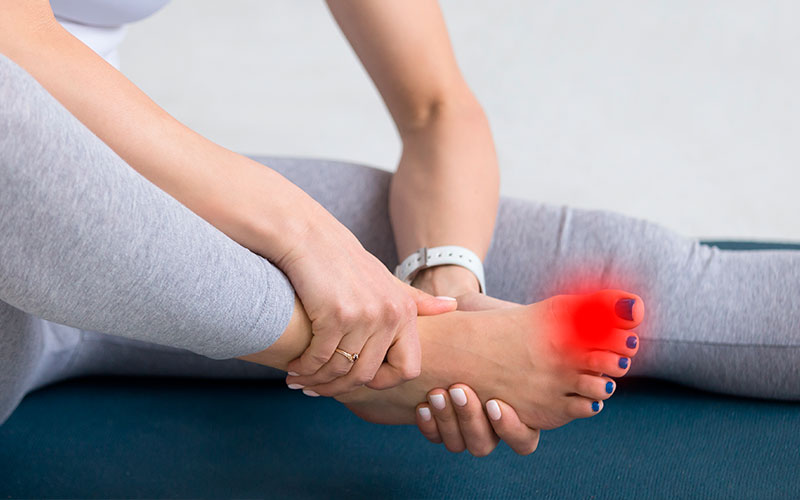Vascular Conditions Affecting the Foot
Poor Circulation, Venous Insufficiency, and Swelling.

There are a number of complications that can arise from poor circulation, venous insufficiency, and swelling that affect your feet. Many of the underlying causes are the same which is why, if you notice any of the symptoms, it is important to make an appointment with a qualified doctor who specializes in foot and ankle conditions.
What are the causes and symptoms of vascular diseases?
Poor Circulation
There are different types of contributing causes to poor circulation. It is most frequently related to:
- Peripheral artery disease, which leads to poor circulation in your legs and feet
- Blood clots
- Varicose veins
- Diabetes
- Obesity
- Raynaud’s disease, where the small arteries in your feet and hands narrow
Poor Circulation Symptoms
There are several different symptoms of poor circulation, and the consequences can be serious. Symptoms include:
- Cold extremities
- Numbness in the hands and feet
- A lack of energy
- Dizziness
- Hair loss
- Skin dryness
- Swelling and water retention in the feet
- Varicose veins
- Headaches
- Tingling and cramps
- Shortness of breath
- Blotchy or blemished skin
Venous Insufficiency
Valves in your leg veins keep blood circulating back towards the heart, but with chronic venous insufficiency, vein walls become weaker, leading to valve damage which causes the veins to remain filled with blood. You are at greater risk of developing the condition if you are:
- Genetically pre-disposed and have a history of DVT (deep vein thrombosis) in your family
- Female, as it is related to progesterone levels
- Older
- Obese
- Pregnant
- Sitting or standing for long periods
- Tall
Venous Insufficiency Symptoms
Pain and other symptoms of venous insufficiency include:
- A dull ache or heaviness in the legs
- Cramping
- An itchy or tingling sensations
- Pain relief when the legs are elevated
Skin changes can include:
- Swelling
- Cracked or irritated skin
- Stasis dermatitis (where the skin is red, swollen, crusted or weeping)
- Surface varicose veins
- Thickening and hardening of the skin (lipodermatosclerosis)
- Slow-healing wounds or ulcers
Swelling
Lymphoedema and limb swelling can have a number of causes. If both legs are affected, then it is more likely that there is a generalized cause such as fluid retention, which is impacted by liver, kidney, and heart function. It can also be caused by medication, periods of immobility, or even illnesses that affect the protein level in the blood.
If only one leg is affected, this suggests a more localized problem that may be caused by venous insufficiency, infection, injury, or lymphatic failure.
Swelling Symptoms
Symptoms include:
- Swelling in the legs and feet
- Redness and blistering
- Venous insufficiency symptoms
- Poor circulation symptoms
When should you see a doctor?
If you notice any of the symptoms of poor circulation, venous insufficiency, or swelling in your feet, you should immediately consult a doctor who specializes in foot care. Because there are many different causes of vascular conditions, the doctor will need to take a full medical history and will examine the leg and foot area. They will also ask a series of questions, including:
- Where do you notice the symptoms?
- Does it change at night and during the day?
- What are your sleep patterns like?
- How active are you?
- Are you overweight?
- What is your salt intake?
- Have you recently changed your medication?
- Do changes in hormone levels affect the symptoms (in women)?
Based on the answers, further tests may be necessary to determine what is causing the vascular condition. Treatment will then be based on the underlying cause.
Consult a Specialist
The team of surgical specialists at Northwest Surgical Specialists provides excellent care to adults, senior citizens, and children of all ages. With many years of experience in diagnosing and treating vascular conditions that affect the feet, they will be able to offer excellent, personalized advice and treatment.